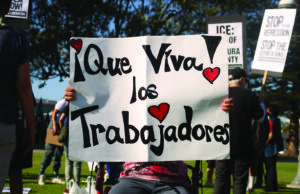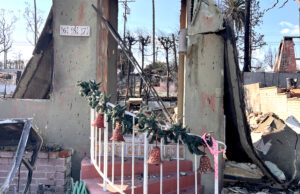Chumash Day gathering shines bright

The welcoming ambiance of musicians drumming and singing indigenous songs while dancers twirled in colorful outfits had the effect of luring anyone, not just natives, into the celebration of Chumash Day. Along the edges, artisans sold bead work, clothing, soap, animal skins and jewelry: all handmade by indigenous artisans. This was the 24th annual Chumash Day at Malibu Bluffs Park, an intertribal gathering and powwow to honor Native American culture and heritage.
After serving as the master of ceremonies for over 30 years throughout many different powwows, Randy Pico received the honor of the role once again. “I love the wonderful spirit I feel from being here with the locals as well as from the intertribal perspective. It’s not only a beautiful location, but it’s the people who make it up and show their support that make it really special,” Pico said. “You will get to see different dance styles from different tribes and bands. You will get to hear songs in different languages that are beautiful. When you go to the opera, you might not understand a word they say but you know, it’s beautiful.”
Kiara Love Flores, from the Pala Indian Reservation in San Diego County, has been powwow dancing for most of her life and was selected for the role of head woman this year. Dancing in the powwow arena allows Love Flores to remain active in the inter-tribal community she grew up around. “[From dancing] I get health and wellness [benefits], I get confidence within my tribe, my pride, my culture, and definitely just being able to represent in a place where we used to be. 100 years ago, we would have been arrested or killed for doing this,” Love Flores said.
As one traveled through the long arrange of artisans, Isabella Reyes’ unique ceramics and landscape paintings native to the Kickapoo people could be found displayed within her booth. For her, Chumash Day is more than simply a place for her to sell her artwork, but instead a revival of her heritage. “By coming here, people are able to see that indigenous people are not stuck in a museum, that we’re not collecting dust somewhere and that we’re a living, breathing, and growing culture and we’re constantly adapting to this world, while still holding true to our customs and our traditions. Coming here allows people to become educated and learn about our culture and just be in a good space,” Reyes said.
On the other side of the arena sits the booth of Adolfo Arteaga and his family, many of whom participated in the gathering as dancers as well. Behind the booth there was talking and laughter as they prepared to dance. Arteaga sells beaded jewelry, turquoise necklaces, sculptures made of clay and dreamcatchers adorned with colorful feathers, all items made by his family both here and in Oaxaca, Mexico. For Arteaga, the most important part of being an indigenous artisan and traveling to intertribal gatherings is spending time with family. “I wanted to be with my kids all the time. So I knew that if I worked for myself, I would be home all the time and whenever we go somewhere, then my kids [come too],” Arteaga said.
Most dancers at the powwow do not dance for themselves. They dance for those who cannot dance, in honor of their ancestors. Most of these songs and dances were not allowed to be sung for many, many years. So now they are celebrated with great joy in the public. “Every dance that you see out here has a meaning. Every style has a meaning. Each category has a meaning. And each individual person has their own style to that. So everyone’s an individual. Everyone does their own thing, but there are certain protocols,” Love Flores said.
By seeking to understand the customs and traditions of others, people can work toward representing what America is and should be all about: a mixing pot of different cultures, backgrounds and people. “A common misconception is sometimes people think, ‘Oh, I gotta be native. Or I should be native to attend.’ But, they don’t have to be. Everybody’s welcome. Everybody’s welcome to enjoy. And it’s free to enjoy this,” Pico said.



